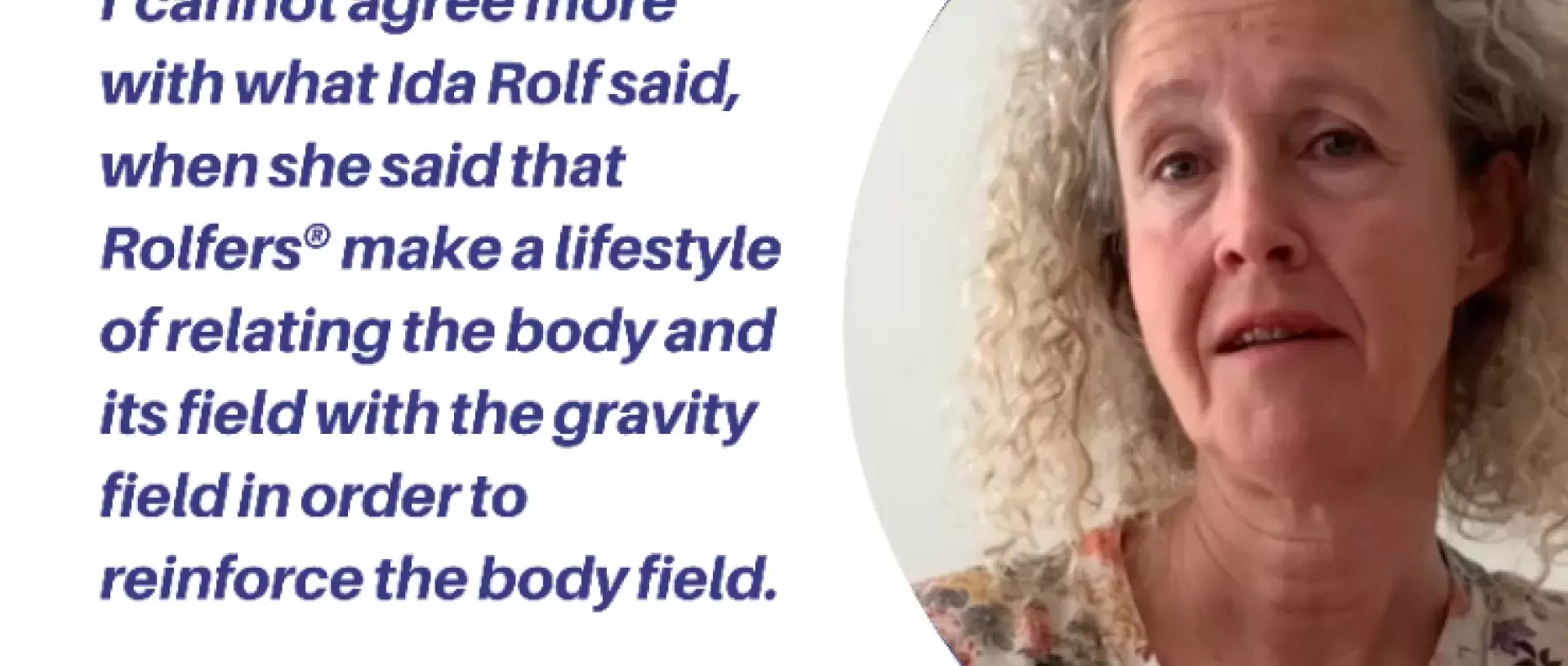Describe how Ida’s words have inspired your work and life…
‘I was Rolfed in my 20s and I started to be a practitioner at the age of 23. So, I can see that Rolfing has accompanied me from the beginning of my adulthood until now and it has been a magnificent journey. I cannot more agree with what Ida Rolf said, when she said that Rolfers make a lifestyle of relating the body and its field with the gravity field in order to reinforce the body field. It is not something that you can do with the tip of your toes, it is a total immersion and I am grateful for it because I feel coherent with my deep wishes. I feel like I can do something with people, for them, it is incredible to see them infold and to find a joy in a way. A joy of being alive, of being three dimensional and it is something that we do not only with our hands, with our hearts, with our words but with the whole of our being. So, it brings a lot of satisfaction’.
How does Ida’s work continue to be relevant in the 21st century?
‘So, now in the 21st century, the glory is the machine. But the body is not a machine. Very often, people come to us and they would like us to fix them as if there were perfectible machine. But we are much more than that, we have emotions, we have feelings, we have history. We have an incredible need to share, and sharing is a delicate thing now a days. How to find a way to share that it is not too much, that it is enough, that gives satisfaction is a difficult thing in the story of human beings. But Rolfing brings, just by the way we use our hands and our touch, we come into meeting people in a very particular way. Not only with our whole being but with our touch. We have a touch that compresses, a touch that slides, a touch that gives space, a touch that recognises the other, that listens, that can find where there are resources, where there are blockages. A touch that gives a dimension of 3D so that we can move into space, relate with different parts of ourselves that relate with our surrounding, constantly being in close contact with what is around us and what is within us. And we have also an articulating touch which allows us to really experiment what does it mean to be supported by gravity. To be supported from underneath and to be able to orient in the space that is around us in the social context, working context, artistic context and just in the context of being with one another. Being in touch with one another in a way that is satisfactory for all of us’.







